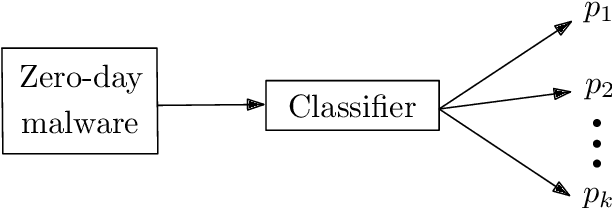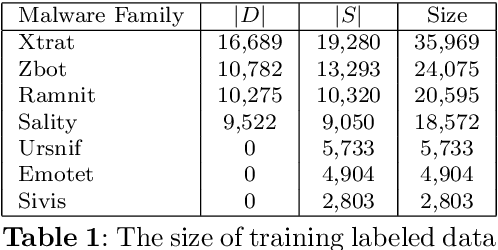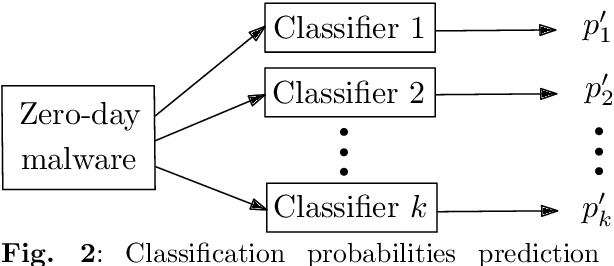Classification and Online Clustering of Zero-Day Malware
Paper and Code
May 01, 2023



A large amount of new malware is constantly being generated, which must not only be distinguished from benign samples, but also classified into malware families. For this purpose, investigating how existing malware families are developed and examining emerging families need to be explored. This paper focuses on the online processing of incoming malicious samples to assign them to existing families or, in the case of samples from new families, to cluster them. We experimented with seven prevalent malware families from the EMBER dataset, with four in the training set and three additional new families in the test set. Based on the classification score of the multilayer perceptron, we determined which samples would be classified and which would be clustered into new malware families. We classified 97.21% of streaming data with a balanced accuracy of 95.33%. Then, we clustered the remaining data using a self-organizing map, achieving a purity from 47.61% for four clusters to 77.68% for ten clusters. These results indicate that our approach has the potential to be applied to the classification and clustering of zero-day malware into malware families.
 Add to Chrome
Add to Chrome Add to Firefox
Add to Firefox Add to Edge
Add to Edge